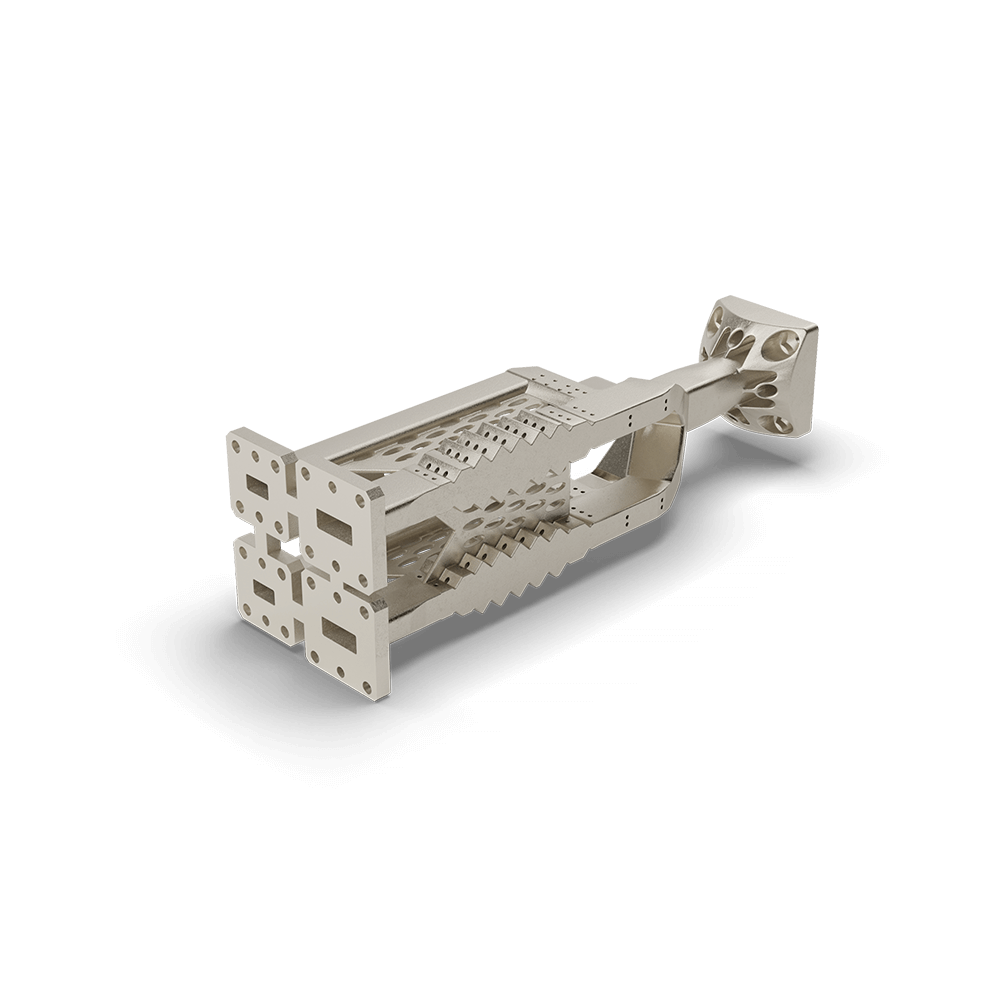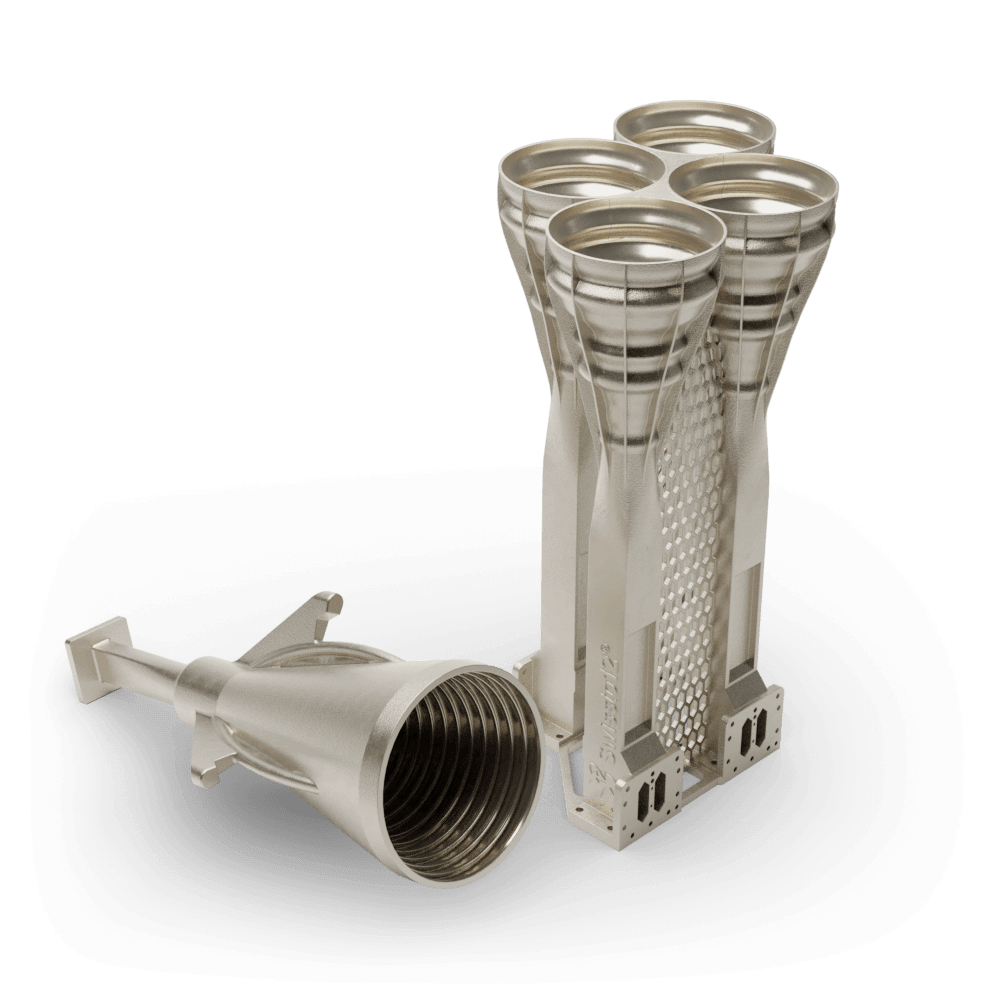SWISSto12 has a wonderful niche in making waveguides and other optimized satellite components with 3D printing, securing it deals to make satellite components for Lockheed and antennas with the European Space Agency (ESA). For most, such lofty projects would provide them with plenty to do. Swissto12, however, wants to go further. In November 2022, the company announced it wanted to produce an entire satellite with the ESA, in what has been dubbed the HummingSat Partnership Project. In a new update, the Lausanne-based company has said that this program is moving along with €30 million in extra funding from the ESA Ministerial Conference Meeting.
Also called the Intelsat 45 (IS-45), the HummingSat is just one-tenth of the the size of comparable geosynchronous orbiting communications satellites. Designed for rideshare missions and more flexibility, the satellite performs but can be produced faster at much lower cost. Meant to optimally take advantage of 3D printing, IS-45 will be launched for the first time in 2025. So far the satellite passed its milestone review in July of last year. The first one was sold in November 2022 to provide Ku-band service to customers.And, now, HummingSat has been given financial support from ESA.
The ESA Ministerial Conference Meeting, which occurred in late November 2022, saw Switzerland, Germany, Sweden, Canada, Austria, and the Netherlands pony up dough for the HummingSat mission. Naturally, SWISSto12 is proud of making its compact but functional satellite in Europe:
“At SWISSto12, we are proud to be at the core of Europe’s new space ecosystem. With our HummingSat product line, we are building a next-generation telecommunications infrastructure with the goal of reliably connecting communities and businesses. ESA has been an invaluable partner in funding and expertise along this journey. The new funding will help us to make the disruptive technology of HummingSat a global success,” said SWISSto12 Founder Emile de Rijk.
“HummingSat is a showcase for a successful ESA Partnership Project and we are delighted to support European and Canadian industry in this exciting new-space venture. The project has been set up in record time and within only a few months SWISSto12 has sold the first commercial HummingSat to global satellite operator Intelsat. ESA Partnership Projects federate the European and Canadian space industry around large-scale programmes, achieving competitive leaps forward and economic impact. They support end-to-end space systems from start-up to in-orbit validation, after which commercial partners operate the system,” said Andreas Mauroschat, ESA Partnership and Opportunity Satellites Programme Manager.
 Waveguide filters and diplexers 3D printed by Swissto12. Image courtesy of Swissto12.
Waveguide filters and diplexers 3D printed by Swissto12. Image courtesy of Swissto12.It seems that SWISSto12 has hitched its cart to ESA and to satellite services provider Intelsat, for whom the 3D printing specialist is manufacturing a satellite. This is a real confirmation that SWISSto12 is well-regarded and of the potential for 3D printing to tip the scales in satellite production. That a relatively new firm can make such a leap to making whole satellites heralds a bright future, but I can’t help but think that another path could have led to an even brighter one.
 A monolithic Ka-band feedchain, which previously would have had to have multiple parts assembled. Image courtesy of SWISSto12.
A monolithic Ka-band feedchain, which previously would have had to have multiple parts assembled. Image courtesy of SWISSto12.For a waveguide, unique design and flexibility means that 3D printing can produce components in an optimized way. This is especially relevant because reduced mass means so much to the new space industry. Conformal clusters or individual waveguides can also fit better into satellites. For instance, functional integration means that a wall can be a heatsink at the same time. SWISSto12 has also demonstrated waveguide bundles whereby adjacent components such as walls are shared. All of this leads to the development of satellites that can outperform traditionally made counterparts. At the same time, 3D printing can create components faster, allowing space companies to meet their schedules. Given the importance of these elements in space communication and the explosive growth in satellites I would have stuck to waveguides specifically.
 3D printed antenna and antenna array. Image courtesy of SWISSto12.
3D printed antenna and antenna array. Image courtesy of SWISSto12.To me, 3D printing is most attractive at the tip of the spear. Would we 3D print an entire golf club? No, of course not. We’d 3D print the face of the club, where additive manufacturing could make the ball fly further or give it better spin. Or we’d print the head to make it hit better for example. The rest of the club is not the “tip of the spear” in functionality and performance. The rest of the club adds bulk, but not so much in value and the larger the component, the more we struggle to print it for a reasonable amount of money.
If SWISSto12 focused on making waveguides and antenna, where the profit per square centimeter and the value per build could be more than with entire satellites. I loved SWISSto12’s independence and ability to supply a burgeoning market. Now, if SWISSto12 was not selling in the U.S. to new space because U.S. firms preferred Optisys, then something else like satellites might make sense. But, to me, the greatest opportunity for concentrated 3D printing of value is still in waveguides.
Or must we concede that the U.S.’s new space industry is going to be U.S. only? Are we seeing a forging ahead of a US New Space industry with U.S. funding and U.S. technology. That can’t be entirely the case because SWISSto12 has partnered with CAES to supply 3D printed satellite parts in the country. Meanwhile, China is building its own new space industry by itself, as well. Is a wider Europe now concluding that it needs to have its own initiative in new space and is the HummingSat project that play?
Subscribe to Our Email Newsletter
Stay up-to-date on all the latest news from the 3D printing industry and receive information and offers from third party vendors.
You May Also Like
Gorilla Sports GE’s First 3D Printed Titanium Cast
How do you help a gorilla with a broken arm? Sounds like the start of a bad joke a zookeeper might tell, but it’s an actual dilemma recently faced by...
Nylon 3D Printed Parts Made More Functional with Coatings & Colors
Parts 3D printed from polyamide (PA, Nylon) 12 using powder bed fusion (PBF) are a mainstay in the additive manufacturing (AM) industry. While post-finishing processes have improved the porosity of...
$25M to Back Sintavia’s Largest Expansion of Metal 3D Printing Capacity Since 2019
Sintavia, the digital manufacturing company specializing in mission-critical parts for strategic sectors, announced a $25 million investment to increase its production capacity, the largest expansion to its operations since 2019....
Velo3D Initiates Public Offering in a Bid to Strengthen Financial Foundations and Drive Future Growth
Velo3D (NYSE: VLD) has been among a number of publicly traded 3D printing firms that have attempted to weather the current macroeconomic climate. After posting a challenging financial report for 2023,...































